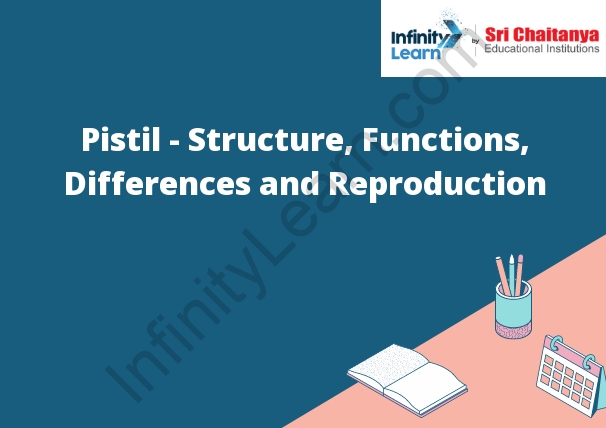Table of Contents
Introduction about Pistil
Pistil – Structure:
The pistil is the female reproductive organ of a flower. It is made up of the stigma, style, and ovary. The stigma is the sticky part of the pistil that collects pollen from the male reproductive organ, the stamen. The style is the thin tube that connects the stigma to the ovary. The ovary is the part of the pistil that contains the eggs.

Anatomy of the Pistil
- The pistil is the female reproductive organ of a flower. It is made up of the stigma, the style, and the ovary.
- The stigma is the sticky part of the pistil that collects pollen from the male reproductive organ of the flower, the stamen.
- The style is the slender part of the pistil that connects the stigma and the ovary.
- The ovary is the enlarged part of the pistil that contains the ovules, the female reproductive cells.
What are the Methods of Reproduction of Flowering Plants?
- The methods of reproduction of flowering plants are pollination, fertilization, and seed dispersal.
- Pollination is the process of transferring pollen from the male organ or stamen of a flower to the female organ or pistil of a flower.
- Fertilization is the process of combining the male and female cells to form a zygote.
- Seed dispersal is the process of transferring the seeds from the parent plant to a new location.
Interaction of Pollen and Pistils
- When a pollen grain falls on the stigma of a flower, it germinates and sends a pollen tube down the style to the ovule.
- The pollen tube releases the sperm cells, which fertilize the egg cell to form a zygote.
- The zygote develops into a seed, which grows into a new plant.
Interactions Between Pollen and Pistils Proceed as Follows
- When a pollen grain lands on the stigma of a flower, it begins to germinate.
- A pollen tube grows out of the grain and grows down through the style into the ovary.
- The tube releases the sperm cells, which fertilize the egg cells in the ovules.
Here are a Few of the Common Differences Between the Carpels and Pistils
- The carpels are the female reproductive organs in a flower. They are located in the center of the flower and consist of the ovary, stigma, and style. The ovary is the enlarged part of the carpel that contains the ovules. The stigma is the sticky surface of the carpel that the pollen attaches to. The style is the slender part of the carpel that connects the stigma to the ovary.
- The pistils are the female reproductive organs in a flower. They are located in the center of the flower and consist of the ovary, stigma, and style. The ovary is the enlarged part of the pistil that contains the ovules. The stigma is the sticky surface of the pistil that the pollen attaches to. The style is the slender part of the pistil that connects the stigma to the ovary.
More About Pistil
The pistil is the female reproductive organ of a flower. It is made up of the stigma, the style, and the ovary. The stigma is the sticky part of the pistil that collects pollen from the male reproductive organ of the flower, the stamen. The style is the stalk that connects the stigma to the ovary. The ovary is the part of the pistil that contains the eggs.
Structure of Pistil
The pistil is the female reproductive organ of a flower. It is made up of the stigma, style, and ovary.
The stigma is the sticky part of the pistil that catches pollen. The style is the thin part of the pistil that connects the stigma to the ovary. The ovary is the enlarged part of the pistil that contains the ovules.
Functions of Pistil
- The pistil is responsible for the production of the fruit and the seeds within the fruit.
- The ovules are fertilized by the pollen and the ovary is responsible for the growth of the fruit.
- The stigma is where the pollen attaches and the style is the connection between the stigma and the ovary.
How do Flowering Plants Reproduce?
Flowering plants reproduce through pollination. Pollination is the process of transferring pollen from the male part of the flower to the female part of the flower. This process allows for the creation of seeds, which will grow into new plants.
Carpel and Pistil – Differences
- A carpel is a structure in a flower that is composed of the stigma, style, and ovary.
- The carpel is responsible for the production of the fruit in a flowering plant.
- The pistil is a structure in a flower that is composed of the stigma, style, and ovary.
- The pistil is responsible for the production of the seed in a flowering plant.
Pollen–Pistil Interaction
- The pollen–pistil interaction is a process that occurs when the pollen of a flower attaches to the pistil of a flower.
- This interaction is necessary for the transfer of pollen from the stamen to the pistil, which is necessary for the fertilization of the ovules and the creation of a seed.
- The pollen–pistil interaction is also responsible for the creation of the fruit and the seed coat of a fruit.







